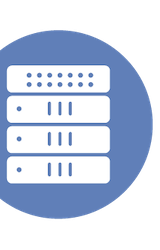In this LinkedIn Pulse article, Jon Myer discussed how Platform9’s Elastic Machine Pool is transforming Kubernetes management on AWS by offering a cost-effective and efficient solution in his latest article. This innovation allows for dynamic resource allocation and scaling, significantly reducing overhead and improving resource utilization. Myer highlights the potential of Platform9’s approach to reshape Kubernetes deployments on AWS, noting its ability to streamline operations and deliver financial benefits. This was published following their participation in Cloud Field Day in January.
Saving Money in EKS Is a Good Start
Ned Bellavance explores cost-saving techniques in Amazon Elastic Kubernetes Service (EKS) in his LinkedIn Pulse article, emphasizing that managing expenses is just the beginning of harnessing its full potential. He delves into strategic practices for optimizing resources and improving efficiency within EKS environments. This article was written following Platform9’s presentation at Cloud Field Day in January.
Dell Makes Storage Multi-Cloud by Design With APEX Block Storage for Public Cloud
Dell Technologies presented their APEX Block Storage for Public Cloud at Cloud Field Day, offering a unique software-defined storage solution that bridges on-premises infrastructure and public cloud services. By advocating for reduced total cost of ownership and high performance, this solution aims to seamlessly integrate the operational experience of local storage with the flexibility and resilience of cloud storage. Proclaiming an “up to 87% cost-savings and 100 times better performance” compared to native public cloud offerings, Dell APEX Block Storage emerges as a strategic option for enterprises looking to balance cost, complexity, and performance across their hybrid multi-cloud environments.
Accelerating Big Data Analytics With NeuroBlade SPU
In a data-driven world where every second counts, NeuroBlade’s SQL Processing Unit (SPU) is revolutionizing big data analytics with its ability to accelerate high-throughput workloads, as Sulagna Saha writes, covering their Cloud Field Day presentation. With organizations in a race to transform data into actionable insights, the NeuroBlade SPU offers a competitive edge with its 10-fold speed increase over GPUs and seamless integration into current tech ecosystems. This breakthrough addresses the pressing demand for faster time-to-insight, ensuring businesses can harness real-time intelligence at sustainable costs, thereby marking a significant leap in analytics processing power.
Cloud Field Day – Infrastructure Matters on the Road
During Cloud Field Day 19, Infrastructure Matters hosts Steven Dickens and Camberley Bates, alongside industry experts Stephen Foskett and Keith Townsend, explored the use case for presenters NeuroBlade, SoftIron, and Platform9. Each contributes a unique on-premises and cloud solutions aimed at optimizing infrastructure performance and management. The discussions, rooted in technical expertise, provide a comprehensive look into the role of these companies’ technologies in shaping the future of IT infrastructure. Listen to the entire webcast from The Futurum Group for more!
Extending the Benefits of Public Cloud Into the Enterprise With SoftIron’s HyperCloud V2.0
At the intersection of cloud convenience and data privacy, SoftIron’s HyperCloud v2.0 emerges as a compelling on-prem infrastructure solution, adapting public cloud ease to private datacenters, as dissected in Sulagna Saha’s latest article based on their Cloud Field Day presentation. As the cloud industry burgeons towards a projected $1 trillion valuation, HyperCloud’s integration of complex cloud-native features simplifies the return to private datacenters without sacrificing agility or scalability. For enterprises hesitant to commit to full public cloud services due to data control and cost, this blend of minimal infrastructure burden and accelerated outcomes offers a secure and adaptable alternative. Read the full article for an in-depth understanding of SoftIron’s innovation in private cloud technology.
Runaway K8 Clusters, Meet Your Match: Platform9’s Elastic Machine Pool (EMP)
Although Jim Czuprynski prefers monolithic architectures like Oracle’s Exadata, as an experienced Oracle DBA he recognizes the common issue of memory over-allocation in containerized environments, driven by the containerization trend. Platform9’s EMP toolset was presented as a solution which introduces an alternative virtualization layer, streamlining resource usage and potentially curbing the over-provisioning habits of Kubernetes engineers. With a focus on enhanced performance and cost efficiency, EMP’s potential to optimize Kubernetes configurations was highlighted at Cloud Field Day, a novel approach eagerly eyed by those in cloud resource management.
SoftIron’s Breakthrough in Private Cloud Technology Was on Display at Cloud Field Day 19
The Chaos Lever podcast takes on Cloud Field Day 19, with a focus on SoftIron, offering custom hardware and software integrations to construct resilient private cloud environments, providing an alternative perspective on the historical progression of IT infrastructure. Their commitment to private clouds is reflected in meticulously developed solutions, tailored for demanding scalability and flexibility, encompassing networking, compute, and storage. Listen in as delegate Ned Bellavance and Chris Hayner consider this product and the rest of the Cloud Field Day news!
The Game-Changer in Cloud Networking: My Take on Broadcom’s Trident5-X12 Chip
Returning to her roots at Cloud Field Day 19, Shala Warner was intrigued by Broadcom’s Trident5-X12 chip, which appeals to her passion for networking with the expansive possibilities of the cloud. This powerhouse chip not only promises to push the boundaries for AI/ML data processing but hints at a security-first future, setting the stage for a new era where Cloud Operators and CDNs unite to fortify against DDoS threats. As a DevOps advocate, Shala envisions this kind of innovation driving a unified approach in both hardware and software realms, fostering collaborative and resilient cloud ecosystems. Read more in this DEV Community article!
Winning the Private (Cloud) War: SoftIron’s Hyperscaled Solutions
Jim Czuprynski reacts to SoftIron’s presentation at Cloud Field Day. They presented a private cloud vision that readily adapts to the challenges of interconnectivity, scalability, and disaster resilience, necessities underscored by recent calamitous events. SoftIron’s tailored solutions, capable of delivering up to 16PB clusters, show their commitment to meeting the elastic computing needs of diverse, growth-oriented IT infrastructures. Read more in this LinkedIn Pulse article!
Achieving Operational Excellence in Hybrid Multi-Cloud With the Dell APEX Cloud Platform Family
In this article, Sulagna Saha reviews the Dell APEX Cloud Platforms, a solution engineered to expand and improve the multi-cloud experience. The APEX Cloud Platform family provides a complete set of solutions to help operate effortlessly in the dispersed world of hybrid multi-cloud. The platform aims to unify cloud and on-premise environments, ensuring operational consistency and efficiency, co-engineered in collaboration with trusted partners like Microsoft, Red Hat, and VMware. The platform promises to streamline the adoption of multi-cloud operations, integrating storage, computing, and familiar management tools within a scalable architecture, bolstered by Dell’s commitment to continuous innovation and security. To delve deeper into the operational excellence enabled by Dell’s APEX Cloud Platform family, read this review by Sulagna Saha or watch their videos from Cloud Field Day!
Cloud to Ground Deployment Magic
Dell Technologies introduced the concept of “Cloud to ground” at Cloud Field Day 19, reflecting the growing interest in cloud repatriation and the desire to bring cloud-like operations to on-premises datacenters. Their APEX Cloud Platform aims to simplify this transition, providing a management solution that integrates with existing tools like Azure console and OpenShift Advanced Cluster Management to automate and manage Cloud OS deployments on Dell hardware. While this innovation aids in the automation and management of on-prem hardware, Ned Bellavance notes that it’s not a full public cloud experience nor a private or multicloud management plane, but rather a significant step towards simplifying hybrid cloud environments for Dell users.
Hardware Vendors Are Providing Better Network Monitoring Than Most Software Vendors
As Thomas LaRock wrote about earlier, 70% of enterprises use private clouds, including those with public-facing websites, pointing out the implicit challenge these companies face in securing their networks against DDoS attacks. Broadcom is innovating in this space with their Trident5-X12 chip featuring the NetGNT engine, which offers real-time traffic analysis and anomaly detection to bolster network security measures. However, despite the advancement in hardware-based security solutions, the onus remains on customers to develop and train the neural network models needed to identify and categorize threats—a task that requires specialized skills.
CFD19 – Get Dollars Back in Your Pocket With EKS Optimisation
With many Kubernetes clusters running at utilization levels of 30% or less, Platform9 emerges as a cost-saving champion, offering strategies to improve efficiency and reduce wastage in EKS clusters. Platform9’s mission to democratize cloud computing was highlighted at Cloud Field Day 19, where Matt Allford learned about their new Elastic Machine Pool (EMP) offering, a tool designed to optimize compute utilization and potentially halve cloud costs. EMP offers seamless integration with EKS, promising minimal disruption, while Platform9’s business model aligns their profits with customer savings, creating a shared incentive to reduce cloud spend effectively.
Better Switch(es) to Fight
Cloud Field Day 19 concluded with Broadcom, as Jim Czuprynski writes in this LinkedIn Pulse article, turning the often-overlooked networking components into a topic of significant impact for cloud infrastructure. Broadcom’s Trident5-X12 chip features smart built-in capabilities to scrutinize every network packet, potentially catching and blocking suspicious traffic such as DDOS attacks in real-time. This technology underscores the importance of robust network security measures, requiring system administrators to be proactive in training and adapting to emergent threat patterns, reinforcing our defense against sophisticated cyber threats.
Dell – Streamlining Cloud – On and Off Premises
Camberley Bates’ LinkedIn Pulse article examines Dell’s latest solutions—APEX Storage for Public Cloud and APEX Cloud Platform—introduced at DTW 2023 and further elaborated during Tech Field Day. These offerings aim to enhance cloud management both on and off-premises, with the SDS-based APEX Storage designed for scalability in AWS, Azure, and eventually GCP, complemented by the APEX Navigator for comprehensive management. The article also highlights APEX Cloud Platforms’ on-premises integrations for OpenShift, AzureStack HCI, and VMware Tanzu that simplify deployment and lifecycle management.
Qumran3D, Broadcom’s New Single-Chip 25.6T Router for Cloud to Core Applications
In this article, Sulagna Saha reviews the new Qumran3D, a single-chip router from Broadcom that combines the power and functions of multiple routing solutions into one device. Designed to address key needs for bandwidth, low power consumption, and security, Qumran3D stands out with its 25.6 Tb/s capacity, integrated design, and enhanced security features like on-chip encryption. With its revolutionary single-chip architecture, Qumran3D promises to significantly reduce energy consumption and physical space requirements, positioning itself as a pivotal hardware innovation for core to cloud applications. Read about it at Gestalt IT or watch Broadcom’s presentation of Qumran3D from our recent Cloud Field Day event.
Multi-Cloud: Because Life Isn’t Painful Enough
Thomas LaRock’s LinkedIn Pulse article wittily addresses the complexities of multi-cloud management and introduces Dell’s APEX Cloud Platform with APEX Block Storage, focusing on how it can ease the burdens of handling high-performance workloads across different cloud providers, despite the potentially higher costs associated with enterprise-level storage solutions and multi-cloud management tools like APEX Navigator.
When CPUs/GPUs Are Not Enough: NeuroBlade’s SPU
Drawing from experience with high-performance Exadata DBMs, Jim Czuprynski considers the challenges in running complex analytic or ML workloads in containerized databases like Apache Spark. NeuroBlade has stepped in with a potential solution for these scalability issues in massive, containerized environments by introducing the SQL Processing Unit (SPU), designed to offload and accelerate these demanding tasks. Touted to boost analytical performance by up to 10x, the SPU exemplifies hardware innovation tailored for the needs of private cloud computing, heralding a promising future for data-intensive workloads.
CFD19 – Accelerating Data Analytics With NeuroBlade
Kicking off Cloud Field Day 19, NeuroBlade made a strong impression on Matt Allford, touting their ambition to become “the NVIDIA of Data Analytics” since their inception in 2018. With hefty funding and a growing team, NeuroBlade’s SQL Processing Unit (SPU) addresses the scaling challenges posed by the exponential growth of data, promising a hardware solution tightly integrated within analytics ecosystems like Spark and Presto. The session not only showcased NeuroBlade’s potential to enhance performance in data-rich environments, but also sparked a lively discussion on the broader implications for both on-premise and cloud-based data analytics infrastructures.







